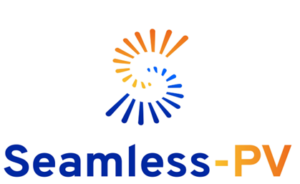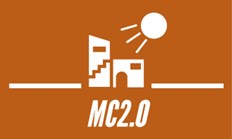Sister Projects
About the Sister Projects
The SPHINX project will cluster (part of) its activities with the other projects granted in the same call or somehow linked in terms of content and scope. The aim of such clustering activities is to increase the common targeted impact and align communication and dissemination activities /events among the projects.
The following projects are currently linked to SPHINX (and to each other).
MASS-IPV
 MASS-IPV – Enabling Massive Integration of PV into Buildings and Infrastructure
MASS-IPV – Enabling Massive Integration of PV into Buildings and Infrastructure
Meeting European climate targets demands a dramatic surge in renewable energy adoption. Although photovoltaic (PV) costs have decreased, integrated PV (IPV) remains a niche market due to persistent barriers. The EU-funded MASS-IPV project brings together key players to demonstrate how innovative tools and technologies can pave the way for the mass integration of cost-effective IPV systems in buildings and infrastructure. Through five distinct construction projects, the initiative will highlight the potential of multifunctional and cost-effective IPV systems. This project is a crucial step towards achieving substantial growth in renewable energy implementation, bringing us closer to our climate protection objectives.
SEAMLESS-PV

SEAMLESS-PV – Development of advanced manufacturing equipment and processes aimed at the seamless integration of multifunctional PV solutions, enabling the deployment of IPV sectors
Integrated photovoltaics (IPVs) have demonstrated their success and impact in their use as building-integrated photovoltaics. They are also considered promising in several other sectors. Their adaptation to other industries or devices could offer surprising benefits. Unfortunately, the very need for adaptable IPV solutions hinders their expansion as their current manufacturing processes cannot create IPV solutions customised to each sector. The EU-funded SEAMLESS-PV project aims to tackle this by developing revolutionary tools for photovoltaic manufacturing as well as new IPV products that offer improved efficiency, adaptability and integrability while at the same time showcasing their cost-effectiveness in comparison to competitors.
Increase

Increase aims to pioneer advancements in PV integration in buildings and promote the adoption of solar power in construction and infrastructure projects.
The project’s goal is to facilitate widespread adoption of Integrated Photovoltaic (IPV) systems through innovations in module and system design, encapsulation, coatings, and operation guidelines. These enhancements focus on aesthetics, reducing glare, minimizing environmental impact, improving fire resistance, and preventing fouling. The project emphasizes IPV facades, roofs, and noise barriers.
Additionally, INCREASE provides practical guidance for infrastructure IPV projects, validated through nine demonstration sites in Spain, France, Belgium, Estonia, Montenegro, and Switzerland. The project involves rigorous testing, uses optimization software to select IPV size and characteristics, and leverages user feedback and co-creation. Demonstrations across Europe and project activities will aim to achieve market acceptance, cross-sector collaboration, policy development, investor engagement, and business case assessments to drive large-scale adoption.
MC2.0

MC2.0 project aims to demonstrate how automated manufacturing of Integrated PV (IPV) elements using the mass customization approach can deliver a cost breakthrough in IPV roofs, IPV facades, IPV Insulating Glazing Units (IGUs) and IPV windows.
Mass Customization 2.0 for integrated PV will enable the cost-effective, fully automatic integration of solar cells into building elements, stimulating an innovative PV industry in the Netherlands and Europe.
We believe that the number one barrier for large scale market uptake of IPV is the high cost. Other –secondary but also important –barriers are immature sector cooperation and certification issues.
To realize the project ambition, the MC2.0 consortium brings together experts and companies on materials for PV laminates (including PV cells), on manufacturing of PV laminates, on manufacturing of IPV products and on market and application of IPV products.
SPHINX
 SPHINX – Sustainable Photovoltaics Integration in buildings and Infrastructure for multiple applications
SPHINX – Sustainable Photovoltaics Integration in buildings and Infrastructure for multiple applications
SPHINX aims to create cost-effective, quickly deployable Building Integrated Photovoltaic (BIPV) elements using innovative matrix shingling technology. These modular, pre-fabricated elements will vary in size and functionality, including lightweight, semi-transparent, and modular tiles. SPHINX also focuses on advanced encapsulant foils and coatings, enhancing power through spectral management, heat control via infrared filtering, and improved aesthetics with light diffusion and coloration. By integrating these technologies, SPHINX seeks to make solar energy integration into buildings more efficient and visually appealing. The project includes developing new manufacturing technologies for pilot lines and demonstrating these innovations across five sites. Another goal is to relocate BIPV product fabrication and the entire supply chain back to Europe from current production sites in the US and China.

